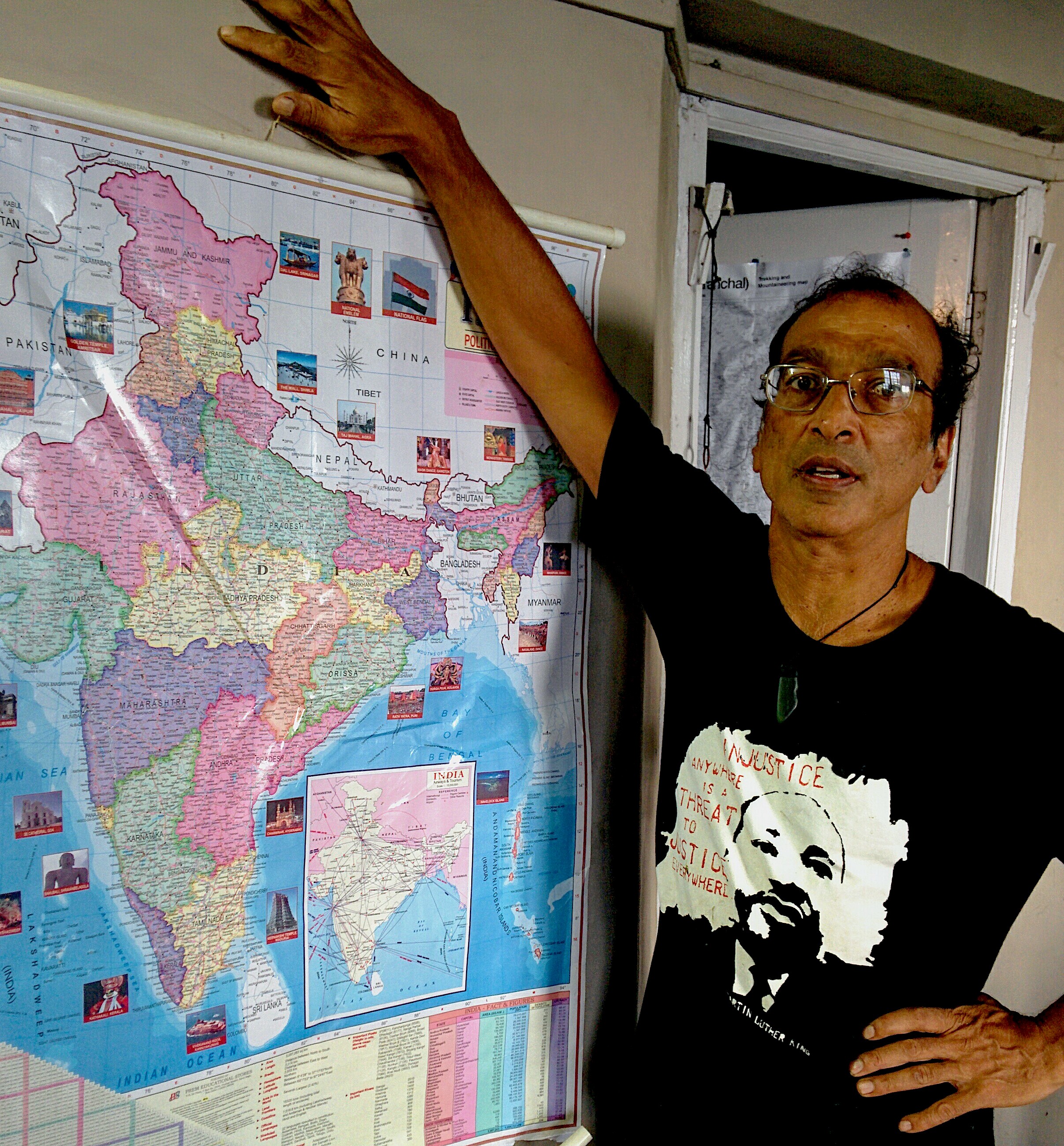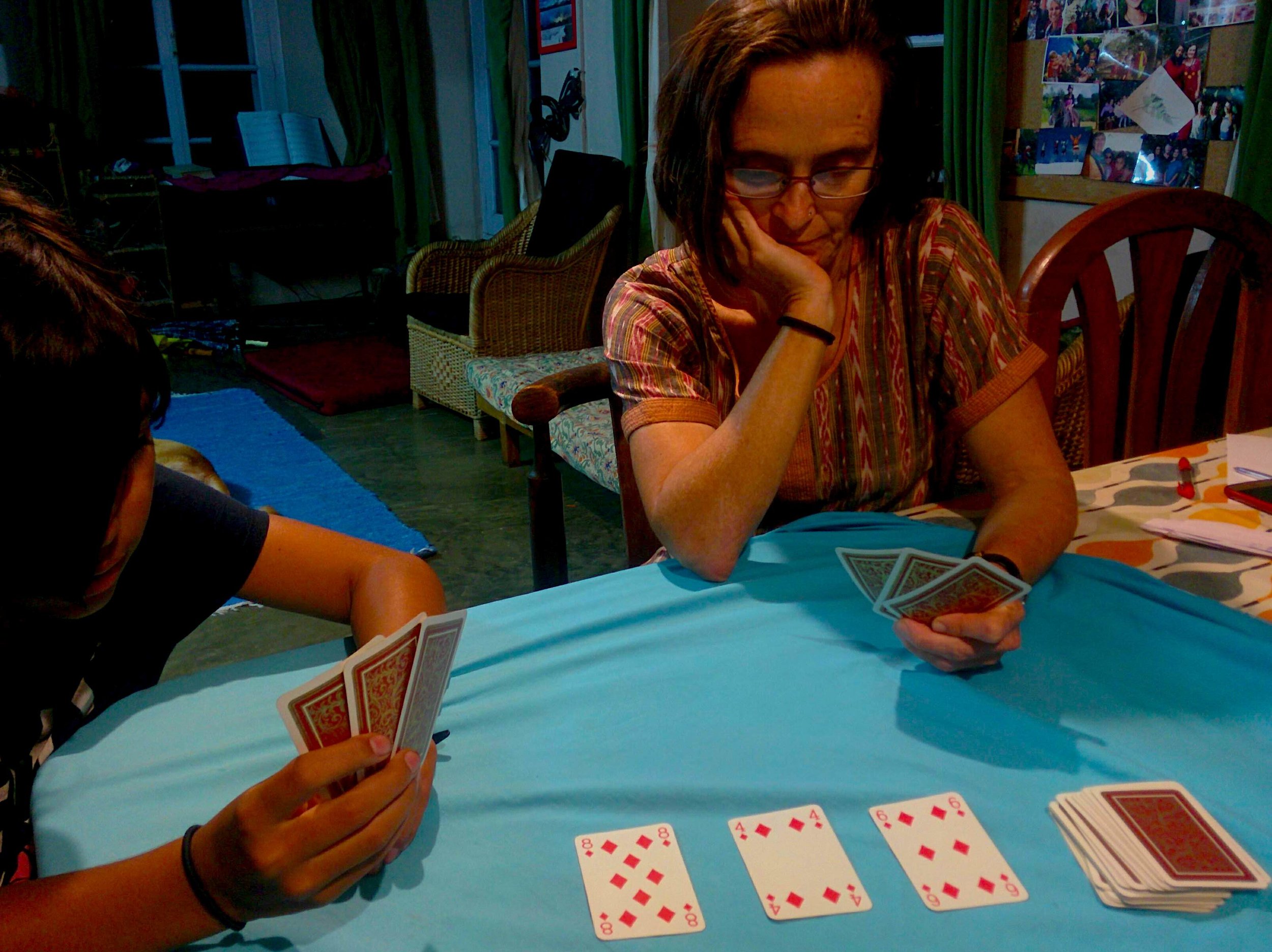A small project I work with here in India is about “community mental health competence”. Community what? Exactly- nobody understands it. Not even them.
People with Psycho-Social Disability (PPSD) are poorly treated and excluded all over the world. In rich countries despite psychiatrists and psychiatric nurses (often imported from poor countries), counselling services, alternative therapies and myriad other resources mental health is a burgeoning problem. How then can poor communities in under-resourced countries accept PPSD, include them in community life and contribute to their wellness. In poor North Indian communities trying to do that is like trying to untie a knot with no ends using your toes- you’ve no idea where to start and even if you did you can’t grip even one strand of the tangled problem at hand- er foot.
But they did start, this little team. After three years well trained community workers visit over a thousand patients and care givers in their homes, making care plans, bringing patients to the counselling centre they started in a. church, getting people to the only psychiatric facility nearby, involving community leaders, coercing an unwilling government to agree to supply medications, trying income generation projects for carers, supporting resiliency in young people and more… They also advocate with officials, train doctors, input to policy, present at conferences, research, talk with community nurses….. they even presented to policy makers in Delhi recently. Outstanding!
I am vicariously learning about complexity by working with them. Here are some of the key lessons:
1. Focus on the behaviour of people and institutions- what they do, how they think, how they relate and the rules they make for themselves (aka policy). This project uses Outcome Mapping, but the specific tool is less important than the thinking. The way into complexity for development projects has to be via people and groups of people. Messy and very messy- but that’s complexity.
Working with individual people in their context… while working with the whole systemic context itself!
2. Systemic thinking. This project not only engages with PPSD in their context but also with the system those people are nested in. Considering who relates to whom, how those relationships are, the various perspectives on mental health and what is relevant in each space they look for ways into the issue everywhere from a mud floored plastic bag roofed slum house to a government ministry in Delhi. Its system thinking- the project conceptually connects multiple levels and dimensions of mental health in India then deliberately engages in those spaces.
3. Flat management. I am always impressed by this team’s relationships. Views and opinions from any and every member of the team are encouraged. In situations where answers are not known anyone is as likely to have relevant insights. In complexity top-down management (good for implementing protocolized solutions) throttles relevant answers before they emerge. Even “Sir” and “Ma’m” which seem respectful, innocuous at most, suggest lack of freedom to agree, disagree, suggest, innovate, experiment, look stupid. This team shares lunch and takes turns to wash up, laughs together often, dances sometimes.
4. High level conceptual thinking, wide networking. One of the planet’s few people with a PhD in community mental health the project director reads, writes thinks and talks continuously about her subject. Other team members also research, write, attend conferences…. think. Research is not just an academic add-on in complexity but part of implementation in this situation where no-body knows what the answer is or even what the questions really are. So a team open to ideas yet grounded (via flat management and engagement with people) in the messy real-world from grass-roots up simultaneously grapples at conceptual and theoretical levels. They network with others working with similar issues in different contexts or with similar approaches to different problems. Last week I facilitated a reflection morning with two other projects- one from 40 km away, the other from Cambodia- which also use Outcome Mapping. Yet again they’re deliberately connecting with ideas-and people- speaking into their space.
5. Experimental and iterative. Some of this teams palpable energy derives from their experimental, iterative approach. As well as getting patients to medications and psychiatrists they have started a community counselling centre, youth resiliency groups, tried income generation, are looking at parenting, engage politically, run corner groups to give information, print simple pamphlets in Hindi…. they even tried chicken raising. Poultry as an answer to mental health???? Wild! They’re currently considering sports in a bustee(slum) as an engagement strategy for substance users and women. It might not “work” but they’ll try anyway and learn something. Following their noses, they take risks and nimbly move on if something is not successful. A totally different ‘probe’ is an electronic, IT based monitoring and analysis system using an android mobile app developed with experts in software for social change. They’ll start using it next month. Who knows? They’re exploring by doing. Throwing multiple small probes out there, knowing some will not work…. hoping some do. Great for complexity.
6. Reflection. Exploring by doing is pointless without putting time into understanding what happens. I was with the team recently facilitating discussion on what had, and had not, worked with chicken raising and other income generation ideas. In fact there was much to learn about what happened, what people did, said and felt about it. This team is continuously gathering lessons from their probes via outcome focused monitoring, reflection meetings, people’s stories. Exploring by doing becomes learning by doing- just add reflection.
7. Engaging at multiple levels. Complexity Implies multiple causes and many effects without straight line one-to-one, X causes Y connections. Its multi-factorial and messy. Engaging with only one dimension of a problem almost certainly will achieve little. In this case the relative importance of medications, information inclusion, policy, economic security, government policy, discrimination, lack of education and myriad other possible “causes”, the relationships between them and how they play out together is unclear. This project approaches its problem in many different ways, often using many strategies together (e.g. medications, counselling and income generation strategy for a PPSD and his care giver or advocacy, scientific information and an offer to collaborate on a paper with a government officer). When faced with a knot without ends there is no formula for what will work. You try pulling at various strands at different places from different angles. Finally one loosens a little, allowing space for something else to slide ever so slightly, and that makes some wiggle room somewhere else….and you’ve started. This project has started slowly untying its knot. Superbly.
8. Experimenting in different geographic and social spaces Similarly I like the way this team works in many places and with different groups. Their implementing partners work in different cities, in semi-rural and urban locations, sometimes specifically with youth, women care givers, substance abusers, economically disadvantaged etc. Only by doing that can they unravel which of their lessons are about human beings and mental health and which are specific to a particular social or geographic space.
This exploratory project prioritises quality over size, people over numbers, experiments, exploration, reflection, dreams. Complexity is my preferred domain so I work with many projects with various elements of good complexity design but none combine so many in such a small project. I’d call it a model complexity project…
...except that for complexity I don’t believe in models .
Young women in a youth resiliency group.
.













